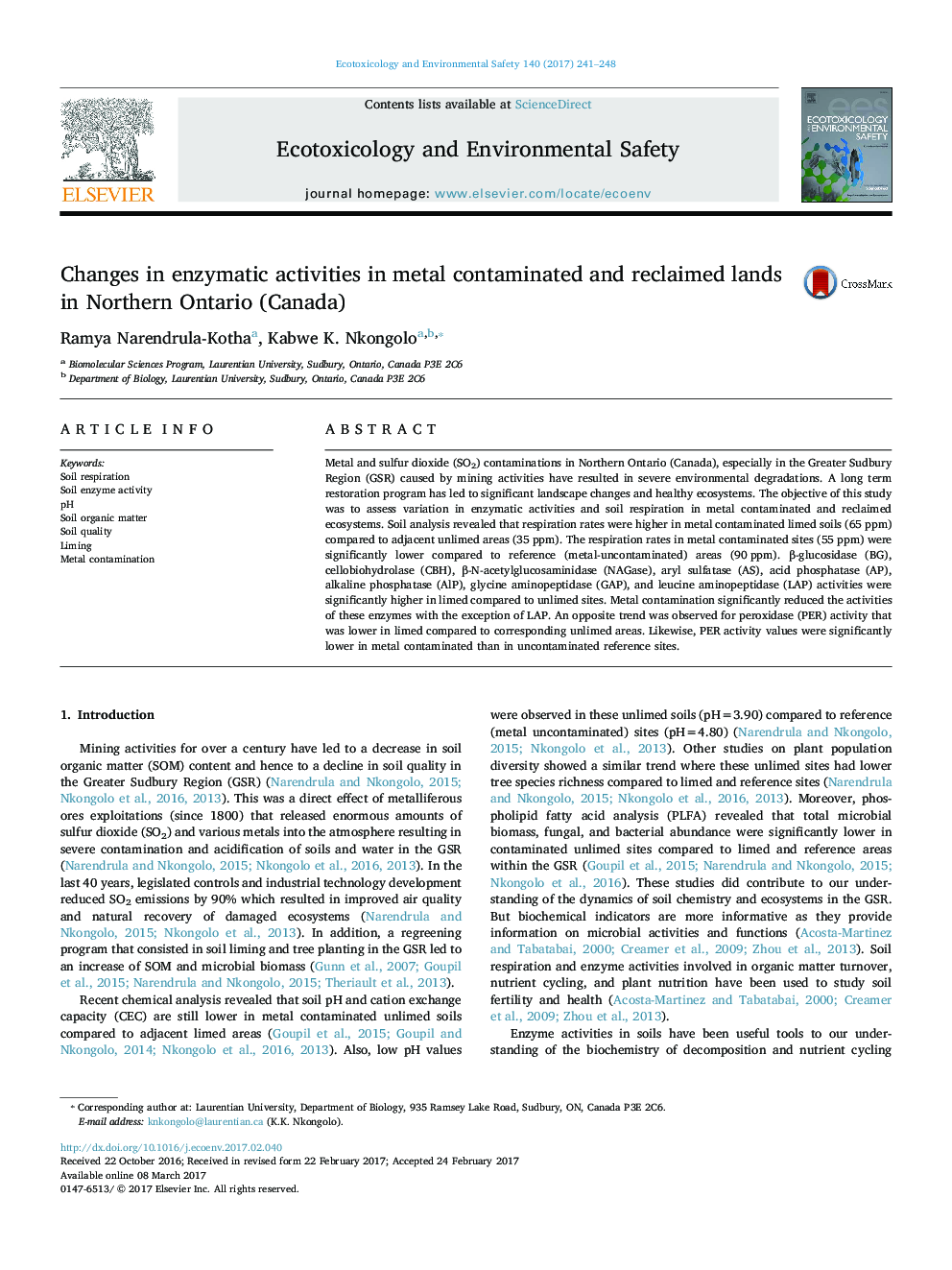| کد مقاله | کد نشریه | سال انتشار | مقاله انگلیسی | نسخه تمام متن |
|---|---|---|---|---|
| 5747702 | 1618924 | 2017 | 8 صفحه PDF | دانلود رایگان |
- Soil liming increases activities of several enzymes.
- Effects of liming last >30 years after limestone applications.
- Metal contamination decreases activities of several enzymes.
- Data suggest that soil respiration and enzymatic activities are closely linked.
Metal and sulfur dioxide (SO2) contaminations in Northern Ontario (Canada), especially in the Greater Sudbury Region (GSR) caused by mining activities have resulted in severe environmental degradations. A long term restoration program has led to significant landscape changes and healthy ecosystems. The objective of this study was to assess variation in enzymatic activities and soil respiration in metal contaminated and reclaimed ecosystems. Soil analysis revealed that respiration rates were higher in metal contaminated limed soils (65 ppm) compared to adjacent unlimed areas (35 ppm). The respiration rates in metal contaminated sites (55 ppm) were significantly lower compared to reference (metal-uncontaminated) areas (90 ppm). β-glucosidase (BG), cellobiohydrolase (CBH), β-N-acetylglucosaminidase (NAGase), aryl sulfatase (AS), acid phosphatase (AP), alkaline phosphatase (AlP), glycine aminopeptidase (GAP), and leucine aminopeptidase (LAP) activities were significantly higher in limed compared to unlimed sites. Metal contamination significantly reduced the activities of these enzymes with the exception of LAP. An opposite trend was observed for peroxidase (PER) activity that was lower in limed compared to corresponding unlimed areas. Likewise, PER activity values were significantly lower in metal contaminated than in uncontaminated reference sites.
Journal: Ecotoxicology and Environmental Safety - Volume 140, June 2017, Pages 241-248
